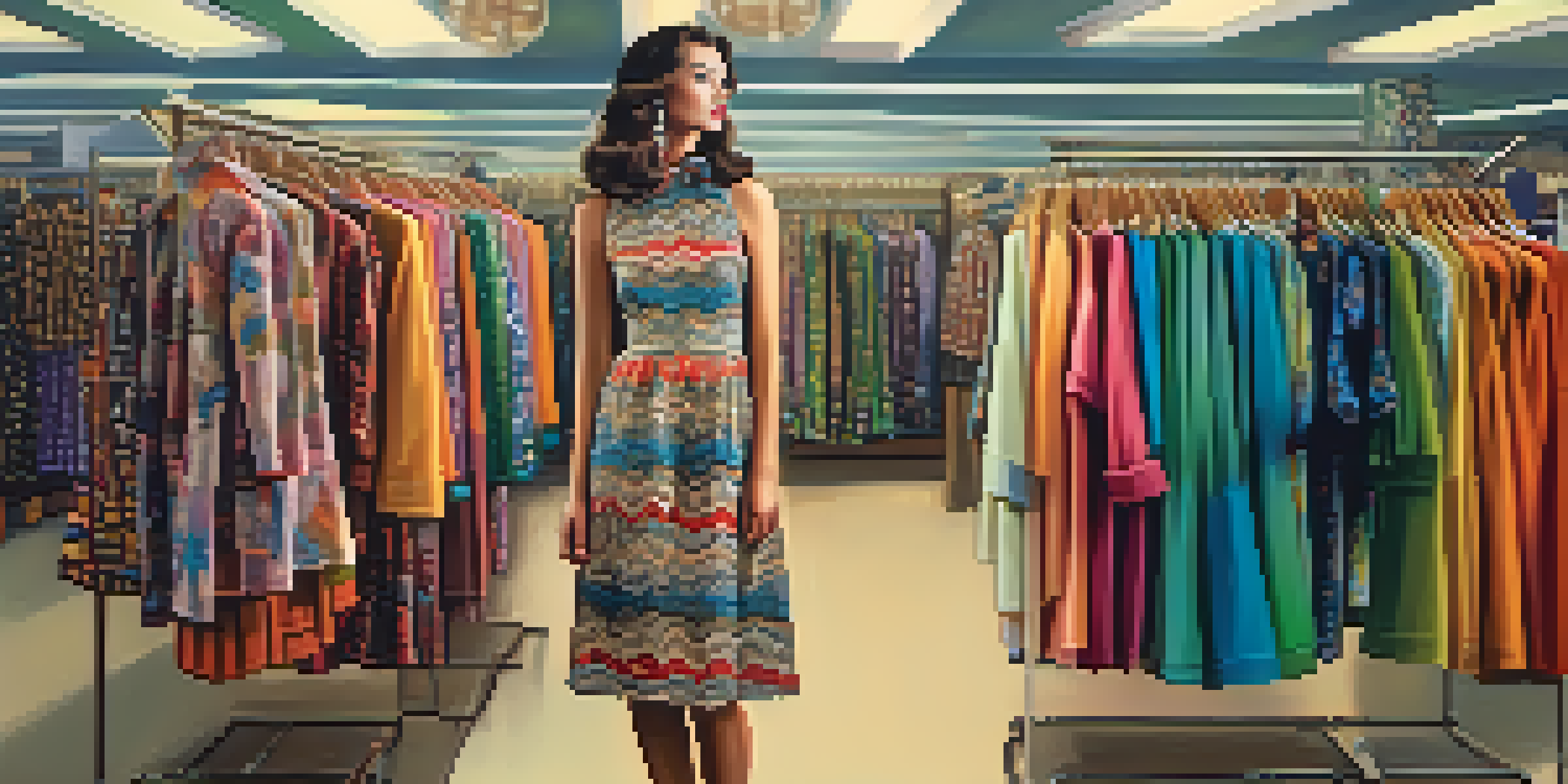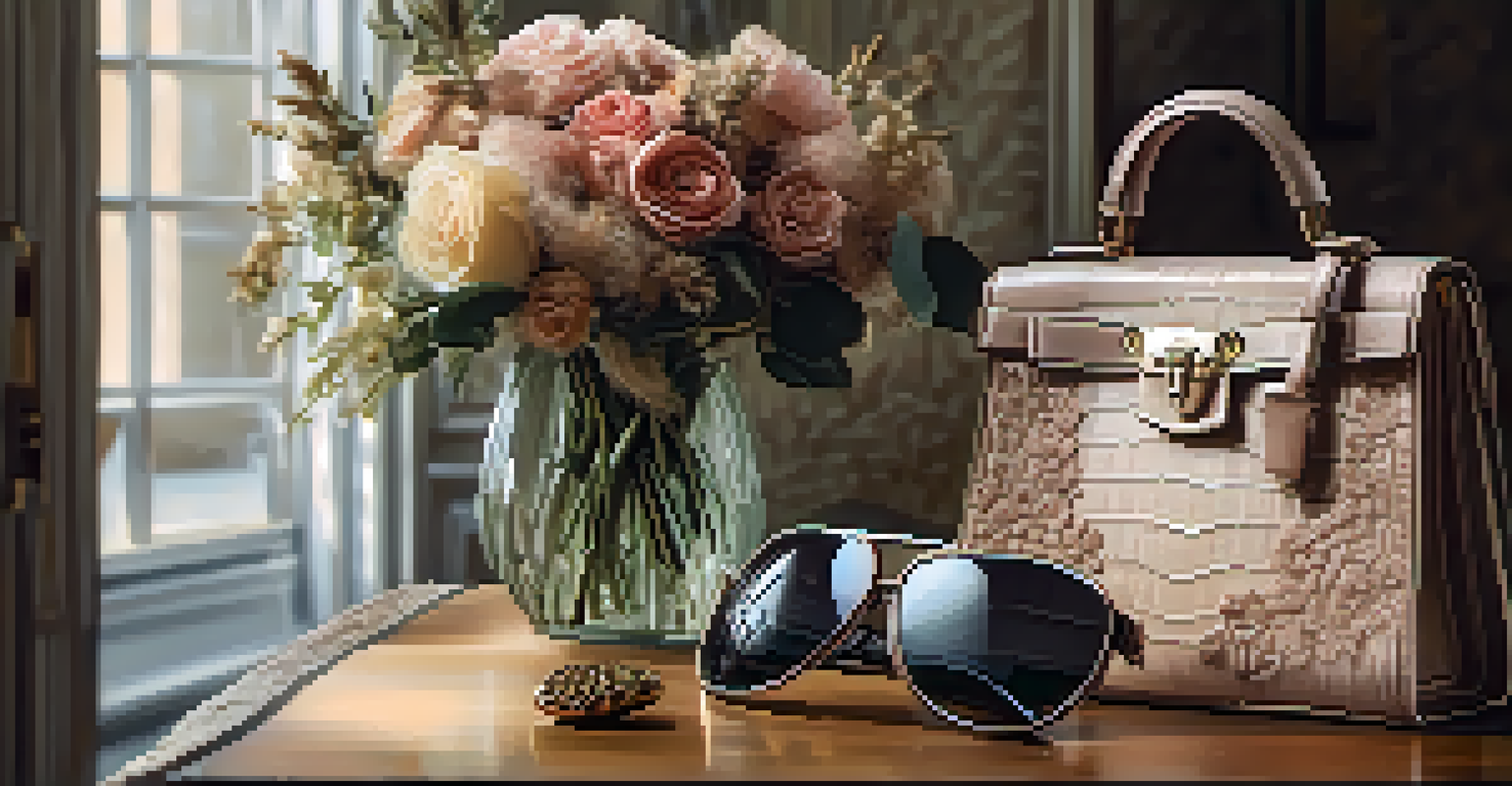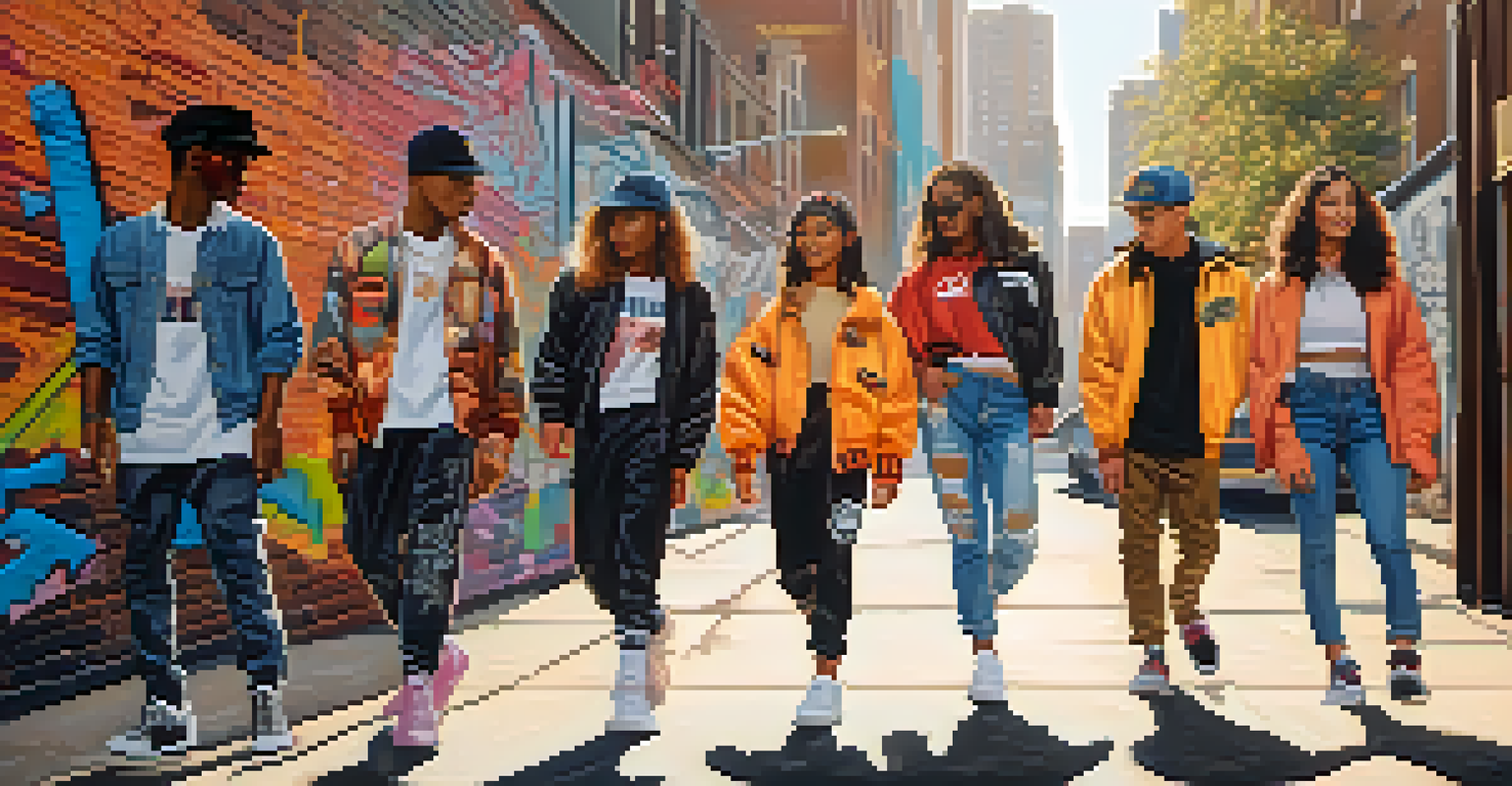The Influence of Vintage Fashion on Modern Luxury Trends

Understanding Vintage Fashion and Its Allure
Vintage fashion refers to clothing and accessories that were popular in previous decades, often exuding a unique charm and character. This allure makes vintage pieces stand out, as they tell a story and evoke nostalgia for a different era. Many modern luxury brands draw inspiration from these timeless designs, creating a bridge between past and present fashion.
Fashion is about dreaming and making other people dream.
The fascination with vintage items has grown significantly, particularly among younger generations who value sustainability and individuality. Thrift shopping and vintage boutiques have become trendy, emphasizing the idea that fashion doesn’t always have to be new to be valuable. This shift in mindset has prompted luxury brands to rethink their sourcing and design processes.
Ultimately, vintage fashion is more than just a trend; it represents a lifestyle choice that celebrates history and craftsmanship. By embracing vintage aesthetics, modern luxury brands can offer unique, high-quality pieces that resonate with consumers looking for something special.
Key Vintage Trends Influencing Modern Luxury Styles
Several signature elements from vintage fashion have made a significant comeback in today’s luxury designs. For instance, the bold patterns and colors of the 70s, as well as the elegant silhouettes of the 50s and 60s, are frequently seen on runways. These styles not only reflect nostalgia but also bring a fresh perspective to contemporary fashion.

Another key influence is the resurgence of accessories like oversized sunglasses, statement belts, and vintage handbags, which add a touch of character to modern outfits. Luxury brands are now incorporating these elements into their collections, appealing to consumers who appreciate a blend of old and new. This trend encourages creativity and allows for more personalized fashion statements.
Vintage Fashion's Growing Allure
The appeal of vintage fashion lies in its unique charm and character, resonating with consumers who value sustainability and individuality.
Moreover, the craftsmanship of vintage items is being highlighted in luxury markets, where quality is valued over sheer quantity. By focusing on artisanal methods and timeless designs, brands can create pieces that are not only fashionable but also durable, making them worthwhile investments.
Sustainability and Ethical Fashion: A Vintage Perspective
The vintage fashion movement aligns closely with today’s emphasis on sustainability and ethical fashion practices. As consumers become more aware of the environmental impact of fast fashion, they are increasingly turning to vintage shops for unique, eco-friendly options. This shift highlights a collective desire to make more conscious purchasing decisions.
Vintage is not a trend; it’s a lifestyle.
Luxury brands are now recognizing this trend and are starting to incorporate sustainable practices into their production processes. By utilizing vintage designs or upcycling materials, they can offer high-quality products that appeal to eco-conscious consumers. This approach not only reduces waste but also celebrates the rich history of fashion.
Incorporating vintage elements into modern luxury collections allows brands to tell a story that resonates with their audience. It creates a connection between the past and the present, reminding consumers that fashion can be both timeless and responsible.
The Role of Influencers in Promoting Vintage Fashion
Social media has played a pivotal role in revitalizing interest in vintage fashion, with influencers showcasing how to style these unique pieces. Their ability to mix vintage with contemporary fashion inspires followers to explore thrift shops and vintage stores for their own wardrobes. This visibility has helped normalize the idea of incorporating vintage into everyday fashion.
Influencers often share their personal stories and experiences with vintage fashion, which creates authenticity and relatability. By showcasing outfits that blend old and new, they encourage their audience to embrace individuality and express their unique styles. This trend is particularly appealing to younger consumers who value personal branding.
Luxury Brands Embrace Vintage Trends
Many luxury brands are reviving vintage styles by blending historical designs with contemporary touches, appealing to a broader audience.
As influencers continue to highlight the beauty of vintage fashion, luxury brands are taking note. Collaborations between influencers and high-end labels are becoming more common, leading to collections that celebrate both vintage aesthetics and modern luxury.
Luxury Brands Reviving Vintage-Style Designs
Many luxury brands are tapping into the vintage revival by reinterpreting classic styles from decades past. Designers are taking cues from historical silhouettes, fabrics, and patterns, infusing them with contemporary touches to create something fresh yet nostalgic. This strategy not only appeals to vintage lovers but also attracts a broader audience looking for unique luxury items.
For example, brands like Prada and Gucci have famously incorporated retro elements into their collections, showcasing everything from bold prints to tailored blazers reminiscent of past decades. These pieces often become instant classics, as they resonate with consumers who appreciate heritage and craftsmanship.
By reviving vintage designs, luxury brands also position themselves as trendsetters, leading the charge in a fashion landscape that values both innovation and tradition. This duality creates a rich tapestry of styles that continues to evolve while acknowledging the past.
The Intersection of Vintage and Modern Streetwear
Streetwear has become a dominant force in contemporary fashion, and its intersection with vintage elements has created exciting new trends. Many streetwear brands are now incorporating vintage graphics, logos, and styles to appeal to a diverse audience. This fusion not only enhances the aesthetic but also tells a story that connects different fashion cultures.
For instance, oversized tees featuring retro band logos or vintage sportswear have become staples in streetwear, attracting fans of both vintage and modern styles. This blending of eras allows individuals to showcase their personal style while paying homage to the past, creating a unique fashion narrative.
Influencers Boost Vintage Fashion
Social media influencers are promoting vintage fashion by showcasing how to style unique pieces, encouraging individuals to explore thrift and vintage shops.
As luxury brands recognize the impact of streetwear, they are beginning to collaborate with vintage-inspired streetwear designers, creating exclusive pieces that cater to a younger demographic. This collaboration emphasizes the importance of versatility in fashion, allowing styles to transcend traditional boundaries.
Conclusion: The Lasting Influence of Vintage on Luxury Fashion
The influence of vintage fashion on modern luxury trends is undeniable, creating a rich dialogue between past and present. As consumers increasingly seek individuality and sustainability, vintage aesthetics provide a compelling solution that resonates with their values. This connection encourages luxury brands to embrace the craftsmanship and history inherent in vintage designs.
Furthermore, as fashion continues to evolve, the appreciation for vintage elements will likely persist, shaping future trends and collections. Designers will continue to draw inspiration from previous eras, ensuring that the legacy of vintage fashion remains alive and well in the luxury market.

Ultimately, the marriage of vintage and modern luxury not only celebrates history but also fosters a culture of creativity and expression. As we move forward, it’s clear that vintage fashion will continue to inspire and influence the luxury landscape for years to come.